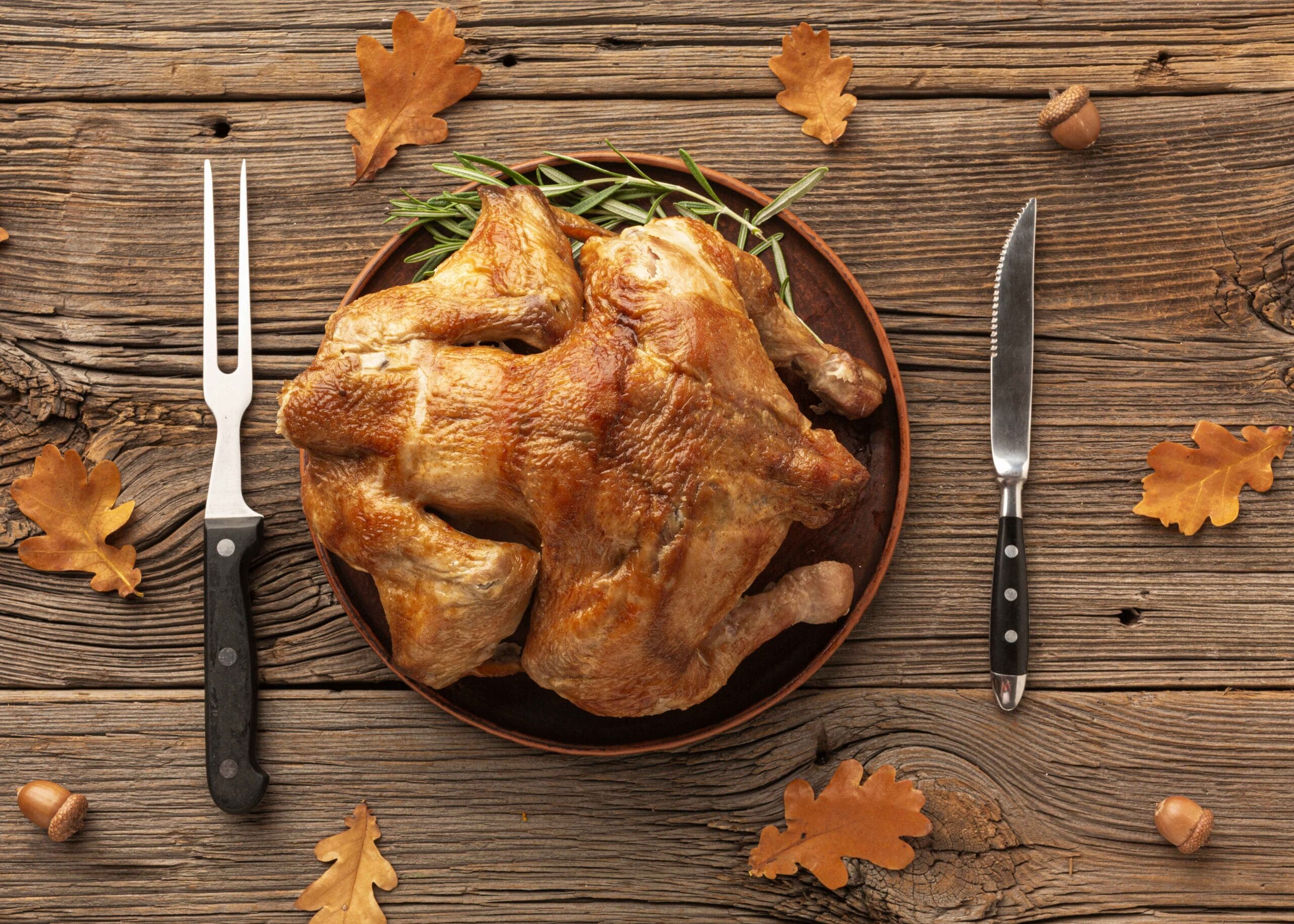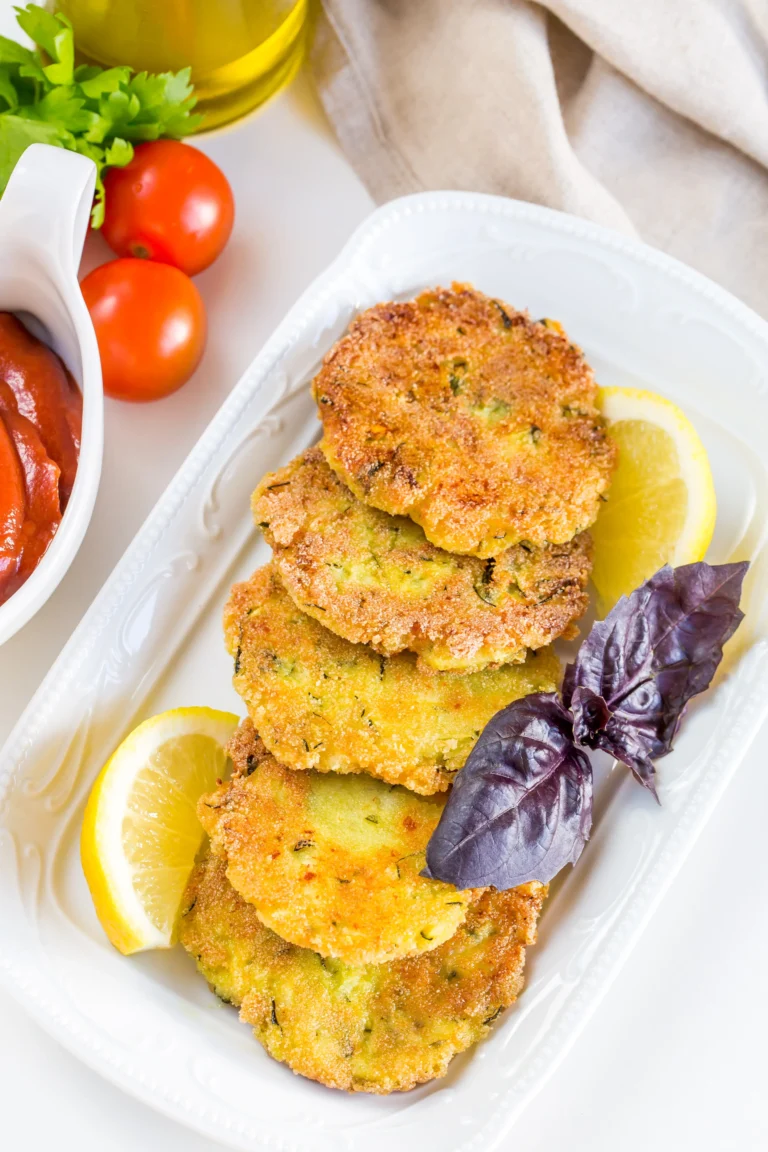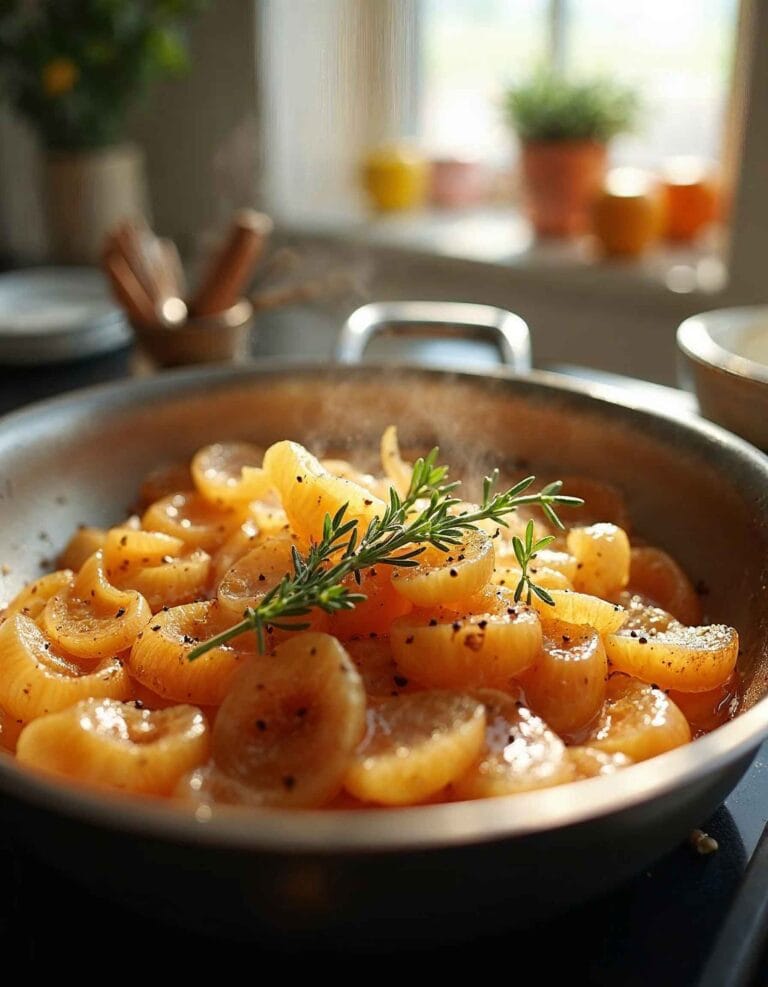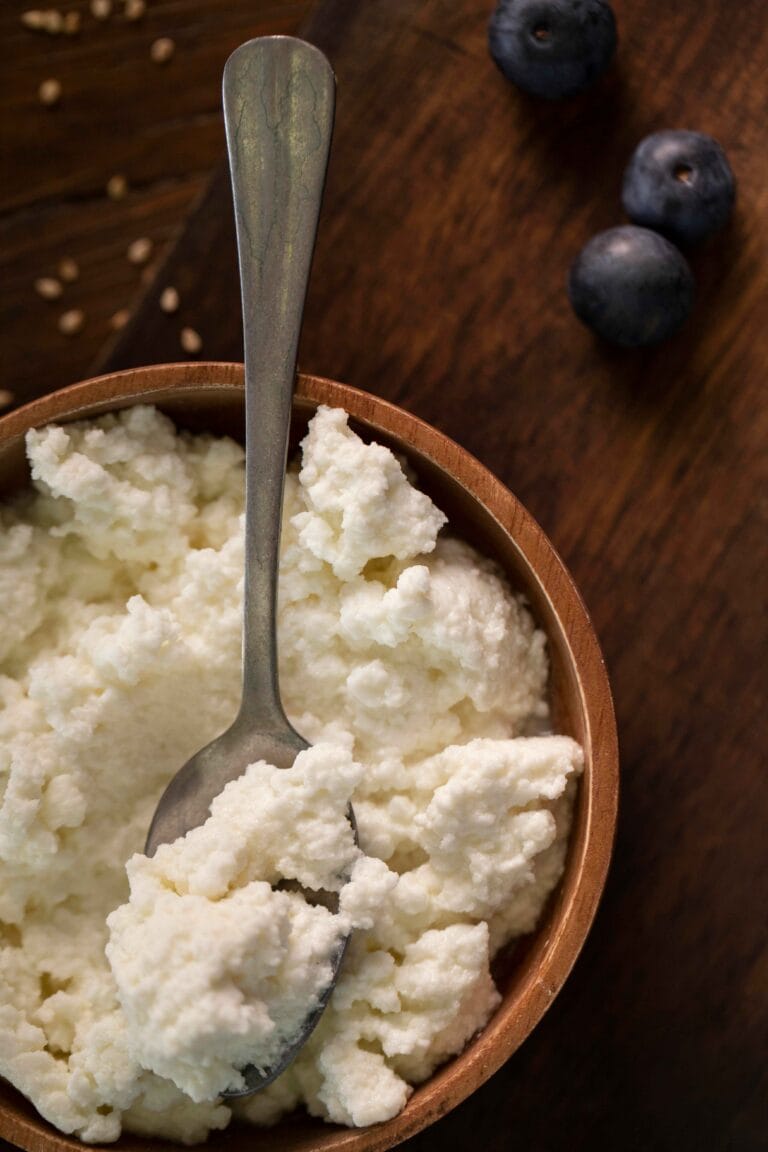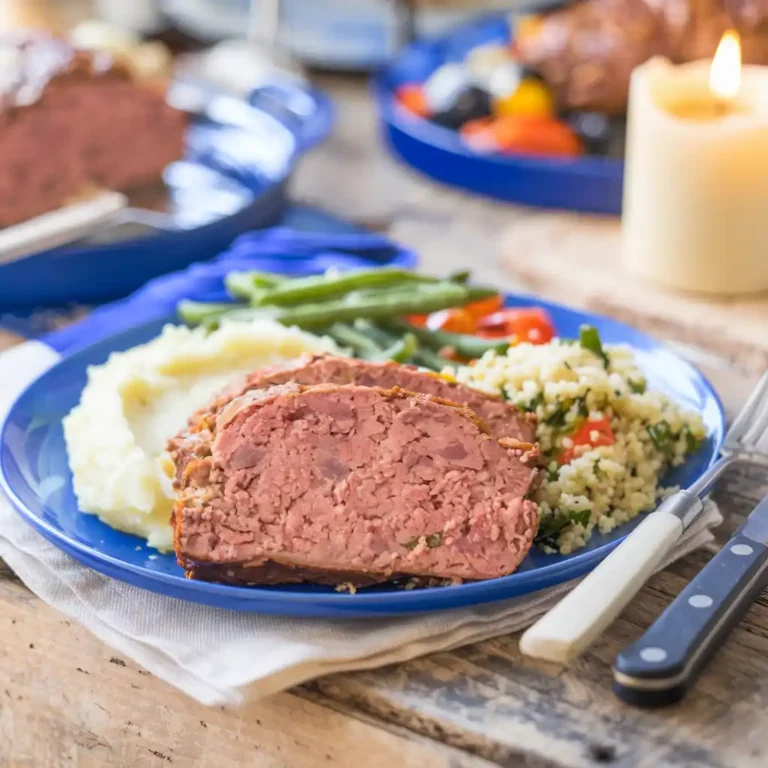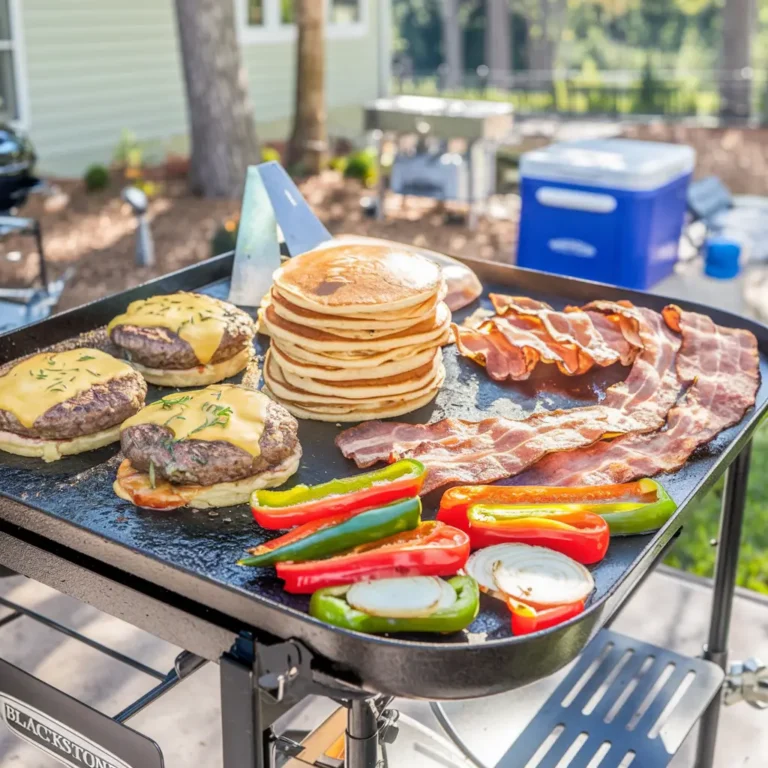Is it Better to Smoke a Turkey at 225 or 250?
When it comes to smoking a turkey, the cooking temperature plays a crucial role in determining the flavor, texture, and overall success of your meal. The choice between smoking at 225°F or 250°F has sparked debates among BBQ enthusiasts and home cooks alike. Both methods offer distinct advantages, from achieving juicy tenderness to enhancing smoky depth.
This article will explore the key differences between these two temperatures, the science behind smoking turkey, and practical tips to help you make the right choice. Whether you’re preparing for Thanksgiving or an outdoor cookout, understanding these temperature variations will ensure a perfect smoked turkey every time.
Smoked Turkey Breast: The Ultimate Guide
Understanding the Basics of Smoking
Smoking is a time-honored method of cooking that imparts flavor, tenderizes meat, and creates a visually appealing result with a smoky outer crust. It’s particularly popular for cooking large cuts of meat like turkey, as the slow, steady heat allows the flavors to penetrate deeply.
Definition and Purpose of Smoking
Smoking is a cooking technique that uses low, indirect heat combined with wood smoke to cook food over an extended period. The purpose is twofold:
- Flavor Enhancement: The type of wood chips used, such as hickory, mesquite, or applewood, infuses the turkey with unique flavors.
- Tenderizing the Meat: The slow cooking process breaks down connective tissues in the meat, ensuring a juicy and tender result.
Role of Temperature in Smoking Meats
Temperature is a critical factor in smoking. It affects everything from the meat’s texture to its safety. Maintaining a consistent temperature is key to:
- Preventing the meat from drying out.
- Ensuring the turkey cooks evenly, avoiding undercooked or overcooked spots.
- Developing the desired smoky flavor without overpowering the natural taste of the turkey.
Smoking turkey specifically requires a balance of heat and smoke. Too low a temperature can prolong cooking unnecessarily, risking uneven cooking or dryness, while too high a temperature can lead to tough or overly charred meat.
Smoking Turkey at 225°F
Smoking a turkey at 225°F is a classic approach for BBQ aficionados seeking maximum smoke flavor and tenderness. This lower temperature requires patience but offers a unique culinary payoff.
Benefits of Low-Temperature Smoking
- Deeper Smoke Flavor: At 225°F, the longer cooking time allows the turkey to absorb more smoke, enhancing the richness of its flavor.
- Retains Moisture: The gradual rise in temperature ensures the meat retains its natural juices, resulting in a moist and succulent turkey.
- Tender Texture: The extended cooking time breaks down muscle fibers, yielding a melt-in-your-mouth texture.
Potential Challenges of Smoking at 225°F
- Time Commitment: Smoking at 225°F can take 30-40 minutes per pound, meaning a large turkey may require 10-12 hours to cook.
- Temperature Monitoring: Maintaining a steady 225°F in your smoker can be challenging, especially in windy or cold conditions.
- Risk of Dry Skin: While the meat remains tender, the skin may not crisp up as it would at higher temperatures.
Smoking Turkey at 250°F
Smoking a turkey at 250°F strikes a balance between faster cooking times and maintaining excellent flavor. This method is ideal for those who want to achieve tender, juicy meat without the extended time commitment required for lower temperatures.
How to Keep Smoked Turkey Breast Juicy
Benefits of Smoking at 250°F
- Reduced Cooking Time:
- At 250°F, the cooking process is faster, taking approximately 25-30 minutes per pound. This can save hours compared to smoking at 225°F, especially for larger turkeys.
- For instance, a 12-pound turkey would take around 5-6 hours at 250°F, as opposed to 10+ hours at 225°F.
- Crispier Skin:
- The slightly higher temperature renders the turkey fat more efficiently, resulting in a golden, crispy skin that’s highly sought after by many cooks.
- Balanced Smoke Flavor:
- While the smoke flavor may not be as deep as with 225°F, the shorter cooking time still allows the turkey to absorb enough smoke to impart a robust yet subtle taste.
- Improved Texture:
- The higher temperature ensures a tender interior without risking an overly soft texture. The outer layer of the turkey gains a beautiful caramelized crust.
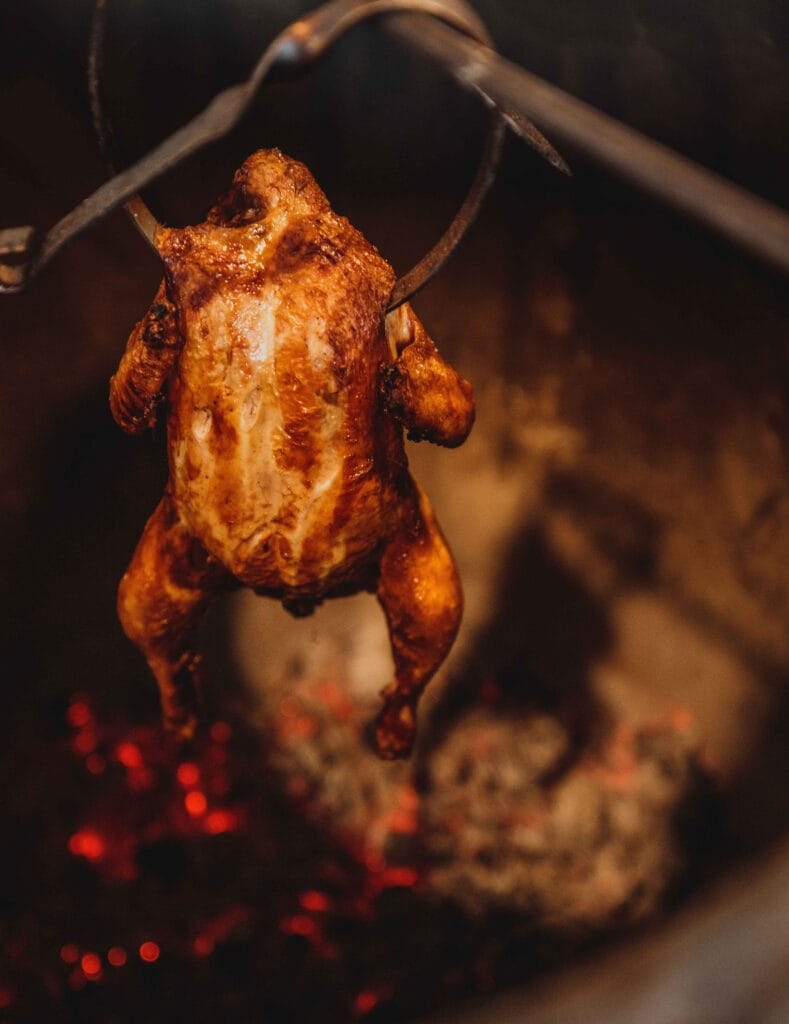
Potential Challenges of Smoking at 250°F
- Less Smoke Absorption:
- The reduced cooking time may not allow the turkey to absorb as much smoke flavor compared to cooking at a lower temperature. To enhance the smoky profile, you may need to use stronger wood chips like hickory or mesquite.
- Monitoring is Still Crucial:
- Even at 250°F, maintaining a consistent temperature is vital. Fluctuations can result in uneven cooking or dry meat.
- Risk of Overcooking Smaller Turkeys:
- Because of the faster cooking time, smaller birds may finish cooking before fully absorbing the flavors or achieving optimal tenderness. Keeping a thermometer on hand to monitor internal temperature is essential.
Tips for Smoking at 250°F
- Wood Selection:
Opt for wood chips that provide a bolder flavor to compensate for the shorter cooking time. Popular choices include hickory for a strong smoky taste or applewood for a milder, sweeter profile. - Frequent Temperature Checks:
Invest in a quality meat thermometer and a smoker thermometer to ensure your turkey cooks evenly. Aim for an internal temperature of 165°F in the breast and 175°F in the thigh. - Basting and Rotating:
To enhance moisture and flavor, baste the turkey every hour with butter, broth, or a marinade. Rotating the turkey periodically ensures even exposure to heat and smoke.
Comparative Analysis: 225°F vs. 250°F
When deciding whether to smoke your turkey at 225°F or 250°F, understanding the differences can help you choose the best method for your desired outcome. Both temperatures yield delicious results but cater to different preferences and cooking situations.
Cooking Time Comparison
- 225°F:
- Smoking at this lower temperature takes significantly longer, around 30-40 minutes per pound. A 12-pound turkey may require 10-12 hours to fully cook.
- This slow process allows the turkey to absorb more smoke, enhancing its flavor.
- 250°F:
- Cooking time decreases to approximately 25-30 minutes per pound. The same 12-pound turkey would cook in 5-6 hours at this temperature.
- While still offering smoky flavors, the faster cooking time is ideal for those with tighter schedules.
Flavor Profiles
- 225°F:
- The extended exposure to smoke results in a deeper, richer smoky flavor, especially with woods like hickory or cherry.
- Ideal for those who prioritize a bold and distinctive smoked taste.
- 250°F:
- The shorter smoking duration produces a more balanced smoky profile.
- Great for those who enjoy a subtler smoky flavor that complements the turkey’s natural taste rather than dominating it.
Meat Tenderness and Juiciness
- 225°F:
- The slow cooking process ensures that the meat stays moist and tender by giving collagen more time to break down.
- Works particularly well for larger turkeys or when paired with brining.
- 250°F:
- The turkey remains juicy, but the faster cooking time means slightly less breakdown of collagen compared to 225°F.
- This method is effective if you’re careful about avoiding overcooking.
Skin Texture and Appearance
- 225°F:
- Lower temperatures can make it challenging to achieve crispy skin. Often, additional steps like finishing in the oven or broiler are needed to crisp the skin.
- 250°F:
- The higher temperature renders fat more effectively, leading to a beautifully crisp and golden skin. This makes it a better option for those who prioritize skin texture.
Suitability for Different Scenarios
- 225°F:
- Best for: BBQ enthusiasts with ample time to dedicate to the cooking process.
- Ideal for: Large gatherings where a rich smoky flavor is the main attraction.
- 250°F:
- Best for: Those who prefer a faster cooking process without sacrificing too much flavor or texture.
- Ideal for: Busy cooks or smaller gatherings who value crispy skin and a balanced smoky taste.
Key Takeaway: Which is Better?
Choosing between 225°F and 250°F depends on your priorities:
- Opt for 225°F if you have the time and want maximum smoky flavor and tenderness.
- Choose 250°F if you’re short on time or want crispier skin with a milder smoke profile.
Choosing the Right Temperature
Selecting the ideal temperature to smoke your turkey involves considering various factors. The size of the bird, your available time, and your personal flavor preferences all play a role in this decision.
Factors to Consider When Choosing the Temperature
- Size of the Turkey:
- Large turkeys (over 14 pounds): Smoking at 225°F can be beneficial for larger birds as the longer cooking time allows for even heat distribution, ensuring the interior is thoroughly cooked without drying out the exterior.
- Smaller turkeys (under 14 pounds): Smoking at 250°F is often better for smaller turkeys, as they cook faster and can develop crispier skin without over-smoking.
- Time Available:
- If you have 10+ hours to dedicate, go for 225°F to maximize flavor.
- For a shorter timeline, 250°F is a more practical choice without sacrificing quality.
- Skin Preference:
- If crispy skin is important to you, 250°F is a better option since the higher temperature effectively renders fat under the skin.
- For softer, more smoke-flavored skin, 225°F works well.
- Flavor Intensity:
- For a bold and smoky turkey, 225°F provides ample time for the meat to absorb the flavors of the wood chips.
- For a subtler smoky flavor, 250°F balances smoke with the turkey’s natural taste.
Techniques for Smoking Turkey
Proper preparation and smoking techniques are essential for a successful turkey, regardless of the chosen temperature. These steps ensure even cooking, flavorful results, and a juicy final product.
Brining the Turkey
- Brining is a key step in ensuring the turkey stays moist during the smoking process.
- Wet brine: Soak the turkey in a solution of water, salt, sugar, and spices for 12-24 hours.
- Dry brine: Rub salt and spices directly onto the turkey and refrigerate uncovered for 24-48 hours.
Preparing the Smoker
- Wood Chip Selection:
- Choose wood chips that complement turkey’s flavor. Popular options include:
- Hickory: Strong and smoky.
- Applewood: Sweet and mild.
- Cherry: Slightly fruity with a deep color.
- Choose wood chips that complement turkey’s flavor. Popular options include:
- Preheating the Smoker:
- Preheat your smoker to the desired temperature (225°F or 250°F) before placing the turkey inside.
- Add wood chips as needed to maintain a steady smoke level throughout the process.
- Placing the Turkey:
- Place the turkey breast side up on the smoker grate.
- For even cooking, ensure there’s space for smoke to circulate around the entire bird.
Maintaining Steady Temperatures
- Use a Quality Thermometer:
- Invest in both a smoker thermometer (to monitor ambient temperature) and a meat thermometer (to check internal temperature).
- Avoid Fluctuations:
- Check the smoker periodically to ensure consistent heat and smoke levels.
- If using charcoal, add fresh coals regularly to maintain temperature stability.
- Baste the Turkey:
- Basting the turkey every hour with butter, broth, or a marinade helps keep the skin moist and enhances flavor.
Resting the Turkey
After removing the turkey from the smoker, allow it to rest for 20-30 minutes before carving. Resting redistributes the juices throughout the meat, ensuring each slice is flavorful and moist.
Common Mistakes to Avoid
Even experienced cooks can run into challenges when smoking a turkey. Avoiding these common pitfalls ensures a successful and delicious outcome.
Over-Smoking the Turkey
- Adding too many wood chips can result in an overpowering smoky flavor, making the turkey taste bitter.
- Use a moderate amount of wood, replenishing every 1-2 hours as needed. Stronger woods like hickory or mesquite require even less.
Inconsistent Temperature
- Fluctuating smoker temperatures can cause uneven cooking, leading to underdone or dry sections.
- Check the smoker regularly and use a high-quality smoker thermometer to maintain consistency.
Skipping the Brine
- Forgoing a brine can lead to dry meat, especially for larger turkeys that cook for extended periods.
- A brine—wet or dry—adds moisture and enhances flavor.
Should You Brine a Turkey Breast Before Smoking?
Not Resting the Turkey
- Carving the turkey immediately after smoking can cause juices to escape, resulting in drier meat.
- Allow the turkey to rest for 20-30 minutes to lock in moisture and flavor.
Ignoring Internal Temperature
- Relying on estimated cooking times instead of checking internal temperature can lead to undercooked or overcooked turkey.
- Use a meat thermometer to confirm an internal temperature of 165°F in the breast and 175°F in the thigh.
Safety Tips for Smoking Turkey
Food safety is paramount when smoking turkey to prevent foodborne illnesses and ensure the meat is safe to eat.
Handling Raw Turkey
- Always wash your hands and sanitize surfaces after handling raw turkey to prevent cross-contamination.
- Keep the turkey refrigerated until it’s ready to be prepped and placed in the smoker.
Smoking at Safe Temperatures
- The smoker must maintain a minimum temperature of 225°F to prevent the turkey from sitting too long in the “danger zone” (40°F-140°F), where bacteria can multiply.
Checking Doneness
- The turkey is safe to eat when it reaches an internal temperature of:
- 165°F in the thickest part of the breast.
- 175°F in the thickest part of the thigh.
- Insert the thermometer without touching bones, which can give an inaccurate reading.
Proper Storage
- After smoking, refrigerate leftovers within 2 hours.
- Store turkey in airtight containers and consume within 3-4 days, or freeze for longer storage.
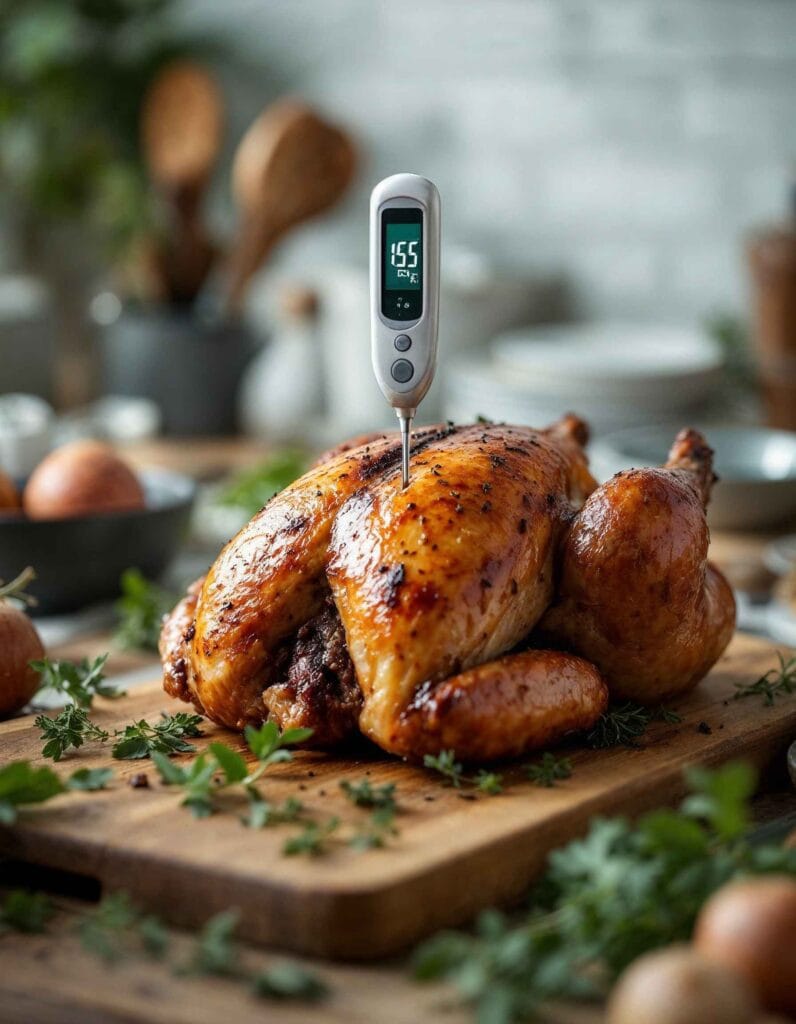
Enhancing Flavor While Smoking
Smoking is not just about heat; it’s an opportunity to infuse your turkey with complex, complementary flavors. Here are some ways to elevate the taste of your smoked turkey.
Wood Chip Selection
- Hickory: Adds a robust, smoky flavor ideal for traditional BBQ lovers.
- Applewood: Imparts a sweet and mild smoky flavor that pairs beautifully with turkey.
- Pecan: Offers a nutty, slightly sweet profile.
- Mesquite: Bold and earthy, perfect for those who love a strong smoke flavor.
Using Rubs and Marinades
- Apply a dry rub or marinade to the turkey 12-24 hours before smoking. Popular ingredients include:
- Paprika
- Brown sugar
- Garlic powder
- Onion powder
- Black pepper
- For a tangy flavor, use marinades with citrus juice, apple cider vinegar, or soy sauce.
Basting and Injecting
- Basting:
- Baste with melted butter, apple cider, or broth every 1-2 hours to keep the turkey moist and flavorful.
- Injecting:
- Use an injector to infuse the turkey with seasoned liquids (e.g., garlic butter or herbed stock) directly into the meat.
Recipes and Pairings
Pair your smoked turkey with delicious sides and creative leftovers for a complete meal.
Suggested Side Dishes
- Classic: Mashed potatoes, green bean casserole, cranberry sauce.
- Bold Flavors: Smoked mac and cheese, roasted brussels sprouts with balsamic glaze, cornbread stuffing.
Creative Leftovers Ideas
- Smoked Turkey Sandwich: Layer with cranberry sauce, stuffing, and gravy.
- Turkey Soup: Use the smoked turkey carcass to make a rich broth for soup.
- Smoked Turkey Salad: Combine shredded turkey with mayonnaise, celery, and cranberries.
FAQs About Smoking Turkey
How long does it take to smoke a turkey at 250 degrees?
At 250°F, the smoking time is approximately 25-30 minutes per pound. For example, a 12-pound turkey will take around 5-6 hours to fully cook. Always use a meat thermometer to check for doneness, aiming for an internal temperature of 165°F in the breast and 175°F in the thigh.
How Long Does It Take to Smoke a Turkey Breast?
What is the danger zone for smoking turkey?
The “danger zone” for meat, including turkey, is between 40°F and 140°F. Bacteria can multiply rapidly within this range. To ensure safety, the turkey should pass through the danger zone within 4 hours. Smoking temperatures should always stay above 225°F to prevent prolonged exposure to unsafe conditions.
Is 225 too low for turkey?
No, 225°F is not too low for turkey, but it does require patience. This temperature ensures deep smoke penetration and tender meat. However, it’s essential to monitor the smoker closely to maintain consistent heat and prevent the turkey from staying in the danger zone too long.
Is it safe to smoke a turkey overnight at 200 degrees?
Smoking a turkey overnight at 200°F is not recommended for safety reasons. At this temperature, the turkey may remain in the danger zone (40°F–140°F) for too long, increasing the risk of foodborne illnesses. For overnight smoking, it’s better to maintain a minimum temperature of 225°F to ensure safe cooking.
Conclusion
Smoking a turkey is an art that combines patience, precision, and a love for great flavors. Deciding between smoking at 225°F or 250°F comes down to your preferences and schedule. Smoking at 225°F offers a rich, smoky flavor and tender meat, making it ideal for those with time to spare. On the other hand, 250°F provides a faster cooking process and crispy skin without compromising too much on flavor or juiciness.
By following the tips and techniques outlined in this guide, from brining to wood chip selection, you can confidently create a mouthwatering smoked turkey that will be the centerpiece of any feast. Always prioritize food safety, use reliable thermometers, and experiment with flavors to make your smoked turkey truly your own.

